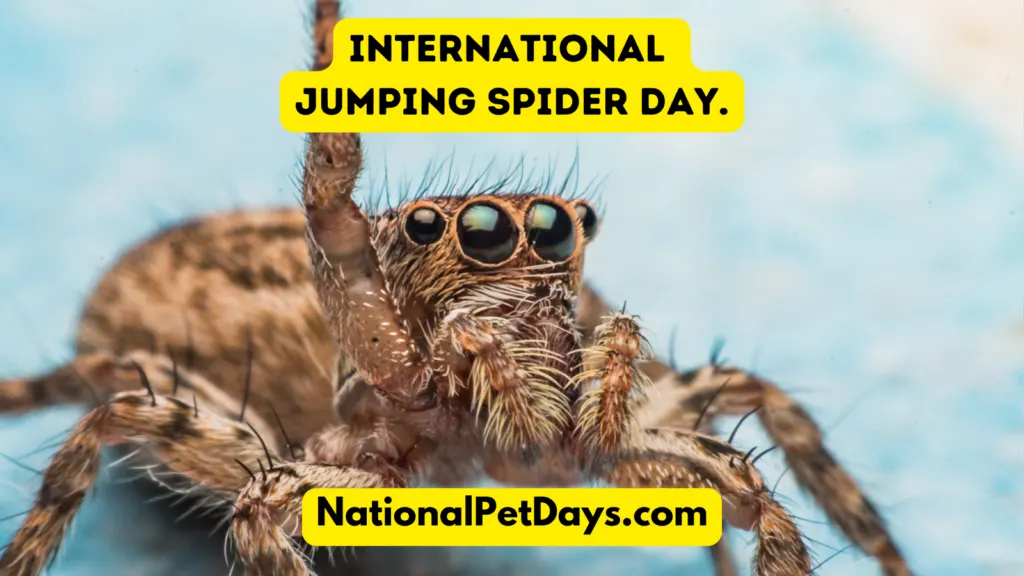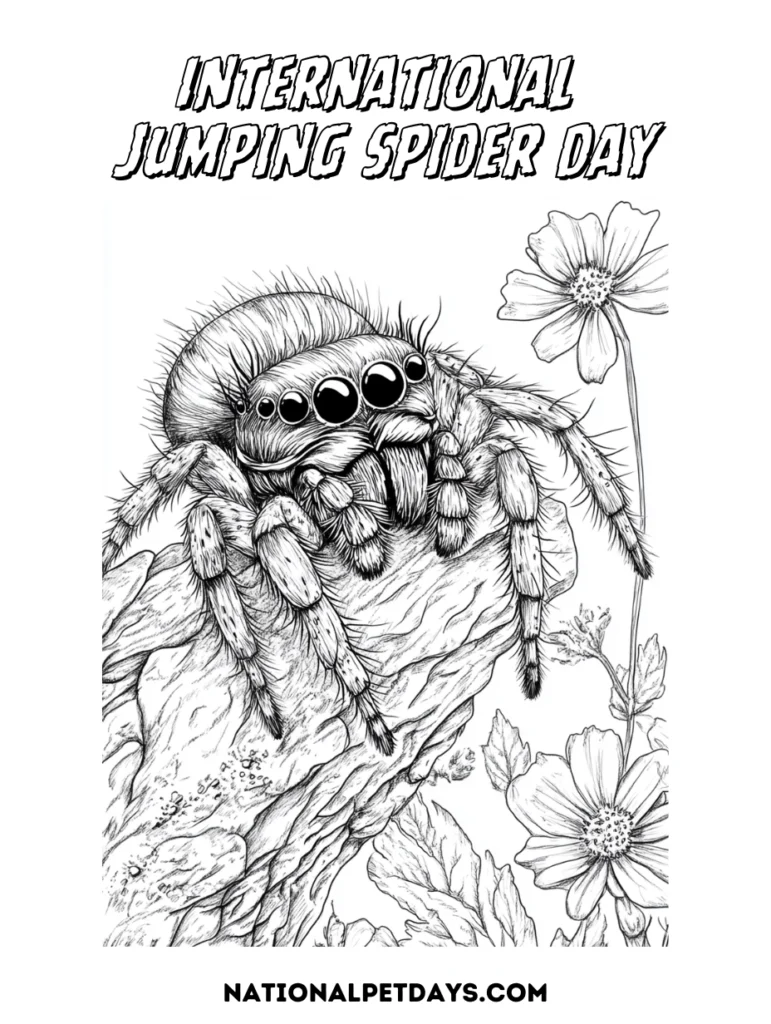Every year on October 10th, arachnid enthusiasts and nature lovers alike celebrate International Jumping Spider Day, a day dedicated to these tiny but fascinating creatures. Jumping spiders are among the most captivating members of the spider family, known for their incredible agility, curious behavior, and striking appearance. This day offers a perfect opportunity to learn more about these remarkable arachnids and appreciate their unique place in the natural world.

The World of Jumping Spiders
Jumping spiders belong to the family Salticidae, which boasts over 6,000 species worldwide, making it the largest family of spiders. Unlike many of their web-building cousins, jumping spiders are active hunters, using their keen vision and remarkable jumping ability to stalk and pounce on their prey.
Their behavior is often described as cat-like, as they carefully observe their surroundings and calculate their movements before making their move.
These spiders are not only skilled hunters but also curious and often seem to “study” their environment. Their large, forward-facing eyes give them a range of vision that is unparalleled among other spiders, allowing them to detect motion and see in color, which is unusual in the spider world.
10 Fun Facts About Jumping Spiders
- Incredible Vision: Jumping spiders have eight eyes, with the two large, central eyes providing them with exceptional vision. They can see in both color and UV light, which they use to navigate and hunt.
- Leaping Ability: Despite their small size, jumping spiders can leap up to 50 times their body length. They use a hydraulic system that increases the pressure in their legs, allowing them to jump with precision.
- Silk Safety Line: Before jumping, these spiders often anchor a silk line to the surface they are on. This safety line acts like a bungee cord, allowing them to retreat to safety if their jump doesn’t go as planned.
- Mimicry Masters: Some species of jumping spiders mimic ants, wasps, or beetles to avoid predators. This mimicry helps them blend into their environment and avoid becoming a meal.
- Complex Courtship Dances: Male jumping spiders often perform elaborate courtship dances to attract females. These dances can include leg waving, abdomen vibrating, and even the production of sounds to impress potential mates.
- Wide Distribution: Jumping spiders can be found on every continent except Antarctica. They have adapted to a variety of habitats, from tropical rainforests to arid deserts.
- Curious Nature: Unlike most spiders, jumping spiders are often curious about humans and will turn to face you if you get close. They may even follow your movements with their eyes.
- Nocturnal Hunters: While many jumping spiders are diurnal (active during the day), some species are nocturnal and have specialized eyes adapted to low light conditions.
- Small but Mighty: Jumping spiders are relatively small, typically ranging from 1 to 25 millimeters in length, but they make up for their size with their bold hunting techniques and complex behaviors.
- Diverse Diet: While they primarily eat insects, some jumping spiders have been known to include nectar and even small vertebrates in their diet, showcasing their versatility as hunters.
How to Celebrate International Jumping Spider Day
There are many ways to celebrate International Jumping Spider Day and spread awareness about these fascinating creatures:
- Learn and Share: Take some time to learn more about jumping spiders and share interesting facts with your friends and family. Social media is a great platform to post about your newfound knowledge and encourage others to appreciate these tiny acrobats.
- Observe in Nature: If you have a garden or live near a park, spend some time observing the local spider population. You might be surprised to find a jumping spider or two in your backyard, especially if you look closely at flowers, leaves, or windowsills.
- Support Arachnid Conservation: Consider donating to organizations that focus on arachnid research and conservation. These groups work to protect spider habitats and educate the public about the importance of spiders in our ecosystems.
- Create Spider-Friendly Spaces: Encourage jumping spiders to visit your garden by planting flowers and maintaining a pesticide-free environment. These spiders can help control pest populations naturally.
A Day to Jump for Joy
International Jumping Spider Day is a fun and educational way to celebrate one of nature’s most fascinating creatures. Whether you’re a seasoned arachnid enthusiast or just beginning to learn about the world of spiders, this day offers a chance to appreciate the agility, curiosity, and beauty of jumping spiders. So, on October 10th, take a moment to jump for joy in honor of these remarkable eight-legged acrobats!
Download & Color – or Pin & Share

